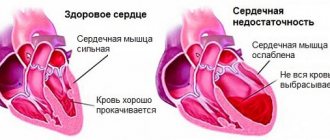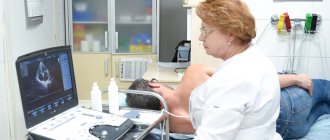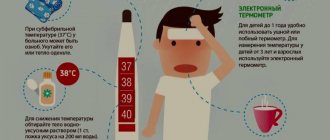Detailed description of the study
The balance of the action of the coagulation and anticoagulation systems of blood in the body (hemostasis) is maintained through many reactions and the complex interaction of proteins with each other. Against the background of severe illnesses, injuries and burns, surgical interventions and some other pathological conditions, disseminated internal coagulation syndrome (DIC syndrome) may develop.
In disseminated intravascular coagulation syndrome, hemostasis is impaired, and against the background of an increased tendency to bleeding, blood clots—thrombi—form in the vessels.
Normally, fibrin protein is an intermediate product formed when fibrinogen is destroyed by another protein, thrombin. These substances are one of the key blood clotting factors.
In intravascular coagulation disorders, thrombin levels are low and the amount of fibrin is insufficient to form a clot. Instead, it binds to fibrinogen or its breakdown products, resulting in the formation of soluble fibrin-monomer complexes (SFMCs). Thus, RFMKs are microthrombi found in the blood.
If the concentration of RFMC increases, this indicates an increased tendency of the body to form blood clots.
The formation of blood clots usually requires a combination of unfavorable factors, such as hereditary predisposition, decreased physical activity, and insufficient fluid intake.
One of the conditions in which there is a tendency to blood clots is pregnancy. The formation of microthrombi in a woman’s body can impair blood flow in the placenta and lead to pregnancy loss.
Determination of the RFMK indicator can be carried out to identify disseminated intravascular coagulation syndrome, the causes of thrombosis, their risk during pregnancy, as well as during heparin treatment. The test is used for indirect diagnosis of placental blood flow disorders; together with coagulogram indicators, it helps to identify impaired hemostasis.
Coagulogram. What is this?
You can take a coagulogram test on any day (except Saturday and Sunday) in the laboratory of the National Health Institution “Nodal Hospital at the station. Vyborg. The result is issued on the same day. (office no. 4)
Coagulogram (syn.: hemostasiogram) is a set of blood indicators that characterize its ability to clot. Blood clotting is one of many protective functions that maintain the normal functioning of the body by preventing excessive blood loss.
The coagulogram can be basic or extended. Typically, a baseline study is ordered first. It helps to understand where in the system the deviation from the norm occurred. And if a pathology is detected, a detailed study is carried out, as a result of which not only qualitative changes are determined, but also quantitative ones.
Material for taking a coagulogram: Venous blood Indications for a coagulogram:
- monitoring the state of the hemostasis system;
- routine examination before surgery;
- pregnancy;
- gestosis (complication of a normal pregnancy);
- monitoring of anticoagulation therapy; (for example, taking heparin)
- monitoring of antiplatelet therapy;
- hematological diseases;
- varicose veins Moscow
- atrial fibrillation;
- Coronary heart disease (CHD);
- stroke;
- Pulmonary embolism (PE);
- DIC syndrome; (impaired blood clotting due to massive release of thromboplastic substances from tissues)
- taking medications (oral contraceptives, glucocorticosteroids, anabolic steroids);
- cirrhosis of the liver.
Basic coagulogram parameters:
- Fibrinogen . The most important test of the state of the coagulation system.
- Prothrombin index (PTI), INR (international normalized ratio), PTT (prothrombin time) . Usually one of these tests is performed, based on the equipment available in the laboratory. The most universal test is INR. All of these studies show an extrinsic clotting pathway.
- Activated partial thromboplastin time . In the test you can find the abbreviation APTT.
- Thrombin time.
Additional coagulogram parameters:
- Protein C. An insufficient amount of this parameter leads to thrombosis.
- Antithrombin . Like protein C, it is a factor in the anticoagulation system.
- D-dimer . Formed as a result of the destruction of a blood clot.
- Lupus anticoagulant.
- Plasma tolerance to heparin.
- AVR (Activated Recalcification Time).
- RFMC (soluble fibrin-monomer complexes).
- Plasma recalcification time.
Coagulogram norms (Table):
| Clotting time | ||
|
| |
| Bleeding time | ||
|
| |
| Analysis indicator | Designation | Norm |
| Prothrombin time according to Quick | PV | 11-15 sec |
| INR (International Normalized Ratio) | INR | 0,82-1,18 |
| Activated Partial Thromboplastin Time | APTT | 22.5-35.5 sec |
| Activated Recalcification Time | AVR | 81-127 sec |
| Prothrombin index | PTI | 73-122% |
| Thrombin time | TV | 14-21 sec |
| Soluble fibrin-monomer complexes | RFMK | 0.355-0.479 units |
| Antithrombin III | AT III | 75,8-125,6% |
| D-dimer | 250.10-500.55 ng/ml | |
| Fibrinogen | 2.7-4.013 g | |
Preparing for a coagulogram:
- This analysis is carried out in vitro (in vitro - outside the body). Blood is taken from a vein.
- Blood is donated on an empty stomach. The last meal should be no later than 8-12 hours before the test.
- You cannot drink any drinks (coffee, tea, and especially alcohol). Only clean water is allowed.
- When taking a coagulogram, it is necessary to indicate the medications you are taking - especially those that affect the blood clotting process Moscow
- The emotional state of the patient is very important. You need to try not to be nervous, to be calm and balanced. Muscle overstrain also negatively affects the results of the study.
- It is useful to drink an additional glass of cold water right before taking the test.
- Interpretation of the results is carried out only (!) by a specialist.
Coagulogram during menstruation:
A coagulogram during menstruation is not able to give clear results. The fact is that during this period the blood is diluted and it is not possible to test its clotting abilities. Therefore, to carry out the procedure, it is advisable to wait until the end of the critical days, but not to take the test immediately.
During this period, the body, on the contrary, is interested in removing excess blood from the uterus, so coagulation is somehow impaired. After the critical days, everything returns to full normality, and the woman can easily get tested. Again, it is also not worth carrying out the procedure just before your period; the body is preparing for the withdrawal process and the blood gradually thins out. In this case, the coagulogram will be unreliable and will have to be taken again
Factors influencing the result of a coagulogram?
Factors distorting the result of the analysis:
- violation of the technique of taking and storing material;
- blood sample hemolysis;
- the presence of fat drops in the material;
- ingress of tissue thromboplastin from the patient’s capillary blood;
- the presence of a lupus anticoagulant in the patient’s blood (directly inhibits coagulation factors);
- sharply increased or decreased hematocrit;
- anticoagulants entering the blood sample;
- transfusion of donor blood components in the last month (distorts the fibrinogen indicator, APTT).
Factors that increase INR and PT and reduce PI:
- drinking alcohol, fatty foods;
- medications: antibiotics, anabolic steroids, aspirin (in large doses), acetaminophen, allopurinol, warfarin, vitamin A, heparin, glucagon, diuretics, MAO inhibitors, indomethacin, kanamycin, clofibrate, corticotropin, levothyroxine, mercaptopurine, methyldopa, mefenamic acid, mithramycin, nalidixic acid, neomycin, nortriptyline, propylthiouracil, reserpine, streptomycin, sulfonamides, tamoxifen, tetracyclines, tolbutamide, phenylbutazone, phenytoin, quinidine, quinine, chloral hydrate, chloramphenicol, cholestyramine, cimetidine, ethanol.
Factors that reduce INR and PT and increase PI:
- excess intake of vitamin K from food (found in beef or pork liver, green tea, broccoli, chickpeas, cabbage, turnips, soy, green leafy vegetables);
- diarrhea and vomiting (due to dehydration and increased blood viscosity);
- medications: vikasol (vitamin K analogue), antacids, antihistamines, ascorbic acid, barbiturates, griseofulvin, digitalis, diuretics, colchicine, corticosteroids, caffeine, xanthines, meprobamate, oral contraceptives, rifampicin, theophylline, phenobarbital, chloral hydrate.
Factors that increase APTT:
- antibiotics, asparaginase, aspirin, warfarin, heparin, thrombolytic drugs (streptokinase, urokinase), quinine, cholestyramine, cyclophosphamide, enoxaparin.
Factors that increase fibrinogen content:
- estrogens, oral contraceptives.
Drugs that reduce fibrinogen levels:
- atenolol, valproic acid, lipid-lowering drugs, corticosteroids, progesterone, thrombolytic drugs (streptokinase, urokinase), fluorouracil, estrogens, fibrin degradation products, nicotine.
Coagulogram: everything you need to know about coagulation
Blood coagulation is a multi-stage, complex process and, at the same time, sensitive to the action of a number of factors. At the same time, the symptoms of “problems”, as a rule, do not make themselves felt for a long time. And clotting tests often reveal abnormalities “by chance.” So who should keep hemostasis “under supervision”? And how can those who are already undergoing treatment understand the indicators?
Who is the analysis for?
Blood clotting testing is primarily indicated for those who:
- suffers from liver disease or has had hepatitis in the past (since most clotting factors are synthesized in the liver);
- suffers from or has a hereditary predisposition to thrombophlebitis and varicose veins;
- suffers from cardiovascular or autoimmune diseases (high risk of vascular inflammation and, as a result, increased thrombosis);
- takes oral contraceptives or has excess estradiol (women);
- miscarriage in the patient’s personal history
Significant risk factors such as smoking, excess weight, sedentary lifestyle, age over 40, frequent flights and others should not be excluded from attention.
And, of course, such an analysis is mandatory before any operation, as well as for those who are already taking “anti-coagulant” drugs.
What the indicators say
The set of “standard” coagulograms (50.0.H94.203) includes the definition of:
- APTT,
- Prothrombin (time, INR),
- Thrombin time
- Fibrinogen.
But what do these indicators mean?
1. APTT, or activated partial thromboplastin time
Estimates the rate of blood clot formation after adding special reagents to plasma, and is measured in seconds.
In other words, APTT demonstrates the effectiveness of stopping bleeding due to plasma coagulation factors (precisely those that are formed in the liver).
At the same time, a lengthening (increase) of the indicator signals the risk of bleeding, and a shortening indicates thrombosis.
And the analysis is especially “relevant” for people taking direct anticoagulants (heparin and others).
2. Prothrombin time (PT)
This is the time period during which the formation of fibrin threads, that is, the actual precursor of a blood clot, occurs.
The indicator is measured as a percentage of the norm, which is 70-120%.
The higher this indicator, the higher the rate of thrombus formation, and therefore the risk of thrombosis.
A decrease in PV is a signal of a tendency to bleeding.
3. INR
In essence, it is a calculated indicator designed to standardize data on prothrombin time obtained using different equipment.
Such “difficulties” have become necessary due to the fact that INR is the basic analysis for the selection and correction of “anticoagulant” drugs (such as warfarin). And data obtained on different equipment (in different laboratories) often did not allow comparison with each other.
Therefore, the International Committee for Standardization in Hematology and the International Committee on Thrombosis and Haemostasis introduced the use of INR in 1983.
And today, its level for a healthy person is at the level of 0.8-1.2. And for those taking indirect anticoagulants – 2.0-4.0.
At the same time, an increase in INR is associated with the risk of bleeding, and a decrease of less than 0.5 may indicate thrombosis.
4. Fibrinogen
Unlike previous indicators, this is directly a substrate for the formation of a blood clot. That is, not an indicator of speed, but a substance. Therefore, the norms for fibrinogen are measured in grams per liter.
An increase in fibrinogen is observed not only with increased thrombus formation, but also with many inflammatory processes (as a way for the body to limit the spread of the “causal factor” and destroyed tissues). And also for those who take oral contraceptives or have elevated estrogen levels, pregnant women, people with high cholesterol and smokers.
A decrease in the indicator can indicate not only the risk of bleeding, but also liver disease.
Of course, the listed indicators are only a “base” for assessing the “health” of the blood coagulation system. And if significant deviations are detected, additional markers may be needed.
What is fibrinogen?
Fibrinogen is a protein that is one of the main blood clotting factors. It is necessary for the formation of blood clots and stopping bleeding, helps in the healing of damaged tissues and restoration of their blood supply. When the walls of blood vessels of any size are damaged, a cascade of biochemical reactions is triggered in the blood, the final result of which is the conversion of fibrinogen into fibrin. A blood clot forms. Almost immediately after this, another cascade of reactions is launched - the anticoagulation system of the blood.
Fibrinogen is synthesized by liver cells and is constantly present in the blood in a certain concentration. When the vascular wall is damaged, it is converted into fibrin, with the help of the enzyme thrombin, which forms polymers in the form of white threads - they are part of the blood clot. Changes in the concentration of fibrinogen in the blood threaten bleeding or thrombosis.
During pregnancy, about 600 ml of blood passes through the vessels of the placenta every minute. After the placenta separates and is delivered during labor, the lining of the uterus is left with a bleeding surface. During childbirth, a woman loses about 500 ml of blood (during a caesarean section, twice as much - an average of 1000 ml). But then the uterus contracts, the blood vessels contract, and the bleeding stops. It is very important that there is a balance in the functioning of the blood coagulation and anticoagulation systems.
During pregnancy, under the influence of hormones, the blood coagulation system is activated. The body is, as it were, “preparing” to cope with physiological blood loss at a crucial moment.
The level of fibrinogen in the blood of the expectant mother gradually increases and in the third trimester increases 2-3 times compared to normal values. This happens under the influence of hormones.










